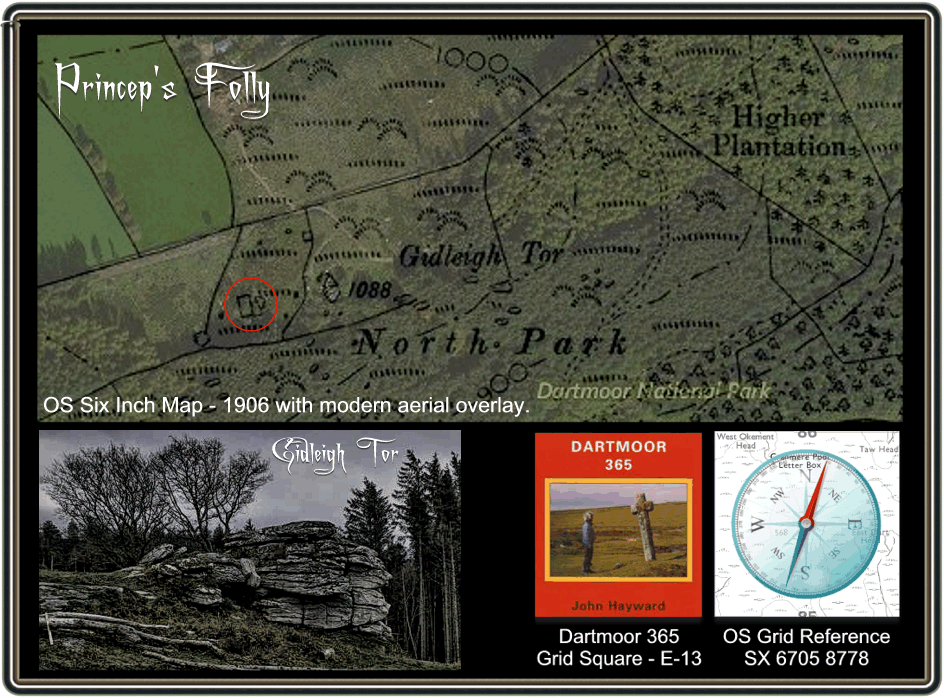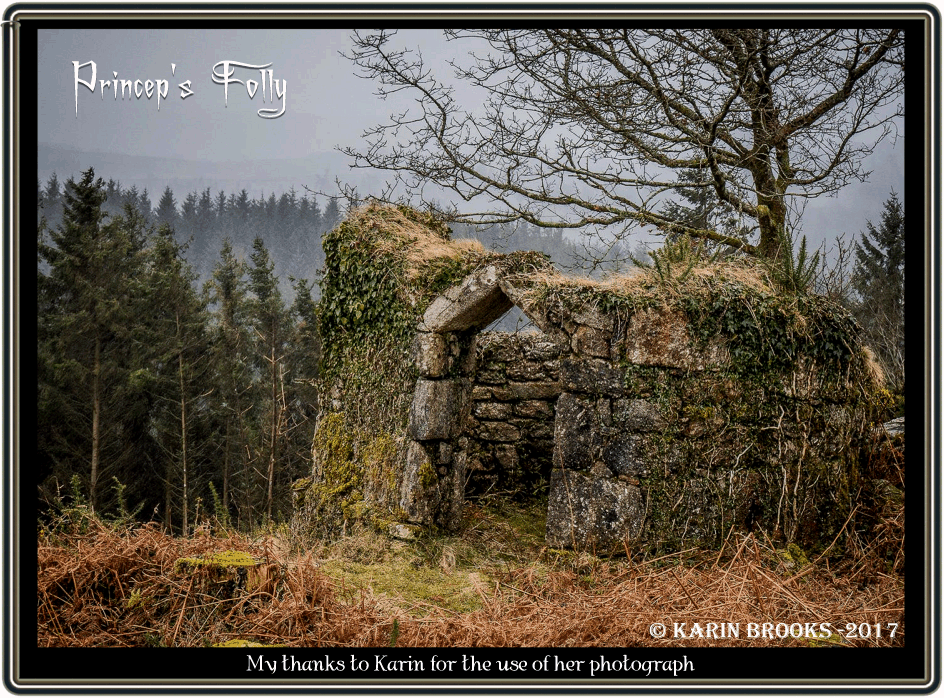
Back in 1905 William Crossing first published his work – ‘Gems in a Granite Setting‘ and in this he notes that on Gidleigh tor a house was built and the ruins were still visible. He also suggests that locally it was said that the house was never finished. However in a conversation he had with a Mr. Whipham he was told that the house was indeed finished and that a caretaker actually lived there. It was Mr. Whipham’s father (Rev. A. Whipham) who granted a ninety nine year lease for two and a half acres of land immediately next to Gidleigh Tor to Mr. Thomas Levett Princep in 1846. Crossing also informed us that before Mr. Princep could move into the dwelling he sadly passed away. Following his death the house along with all its materials was demolished and the lease for the land was sold by his widow in 1851. pp 57 – 58.
“Gidleigh Tor seems now to be known locally as Princep’s Folly, because of the house that was built on the summit over ninety years ago by Mr. Thomas A. Princep. Judging from the boundaries of the old dwelling that can be traced today, the house was not a large one, and I noticed that, to gain added strength its walls had been incorporated in some of the massive natural rocks near at hand. This idea had also been adopted in the outhouse near by. These one-time habitations hold a fascination for me, and as we stood there I wondered as to the main idea that prompted the building of a house in such a lonely and exposed position.
I understand however that Mr. Princep never lived there, but that the house was actually occupied by a caretaker. There are many structures of varying kinds in many parts of England which are known locally as ‘follies’ but a strange fact of Princep’s Folly is that the widow surrendered the lease shortly after her husband’s death, the fixtures and materials were sold by auction, and the house demolished. A few steps from what is left of the house is an old tower, octagonal in shape, now roofless, indeed an elderberry is thriving well inside that it has already outgrown the tower itself. The building is entered through a doorway with a pointed arch, and there is a window from which had fallen, I noticed, a nicely masoned sill-piece which still retains its old iron fastening. – Arthur Wilde.” The Western Times, May 22nd 1942, p.4.
Grumley-Grennan (p.38) gives a date of 1848 for when the structures were built and according to him they consisted of a house and two towers. All that remains today as can be seen by Karin Brooks’ photograph below (and many thanks to Karin for giving permission to use it) is the lower part and doorway arch of a tower. Amazingly enough the ruins of the folly have received no recorded protected status which seems rather amiss considering it rarity value on Dartmoor.
It has also been suggested that the house and towers may have been a lodge house which was associated with the nearby deer park??? Another debatable fact is that due to the folly and the name of its builder Gidleigh Tor has also been known as Prince’s Tor which possibly arose from some mis-spelling of Princep’s surname? Another nearby relic that has also long gone is the gate which stood at the head of the lane leading into Gidleigh Chase which was known as Princep’s Folly Gate.
Thomas Levett was born at Wychnor Park in Staffordshire in 1811. In later years he was a local justice of the peace and a celebrated cattle breeder. In 1835 he inherited Croxall Hall in Derbyshire on the condition that he adopted the name of Princep, hence he became Thomas Levett Pricep. In 1838, following the death of his first wife, he married Caroline Mary Templer who was daughter to the Rev. J. J. Templer of Newton Abbot and also a relation to the Templers of Stover Park and moved to Devon. On the 15th of December 1849 Thomas Levett Princep died suddenly whilst crossing Teignmouth harbour on his boat.
Several writers have expressed the opinion that Princep’s Folly is not a true folly in the sense of the word. The term in this case could be applied to the fact that a structure was built and that the ‘folly’ was due to the fact it was never used by the owner.

Crossing, W. 1986. Gems in a Granite Setting. Exeter: Devon Books.
Grumley-Grennan, T. & Hardy, M. 2000. Gidleigh – The Story of a Dartmoor Village. Gidleigh: Glebe Publishing.
 Legendary Dartmoor The many aspects past and present of Dartmoor
Legendary Dartmoor The many aspects past and present of Dartmoor


